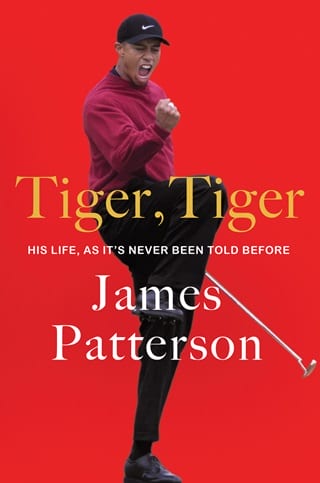Chapter 75
Lost Tree Village
North Palm Beach, Florida
February 25, 2016
Had a few friends over tonight to talk The Ryder Cup 2016 #teamusa, tweets seventy-six-year-old Jack Nicklaus on a Thursday night in late February, accompanied by a photo of him and his wife hosting a gathering at their home for more than twenty-five PGA players—including Tiger Woods, Phil Mickelson, and Davis Love III.
The forty-first Ryder Cup isn’t set to start until late September, but Nicklaus has wasted no time gathering prospective US team members together for a dinner party to discuss how to reverse the wildly lopsided record of the last ten biennial competitions—Europe: eight; America: two.
There’s steak and lobster to eat, Jack Nicklaus–branded wine to drink, and Jack Nicklaus–branded ice cream for dessert—as well as food for thought.
“We all learned something for sure,” says Love, who will captain the twelve-man team. “We got to see Tiger, Phil and Jack, all in the same room, talking to each other and asking each other questions. We had an awful lot of wins sitting there for some young guys to listen to.”
Though Tiger lives just a few miles north of Nicklaus, his appearance at the gathering comes as a surprise to some of the new players on the tour. “It was cool to see Tiger for sure,” says Keegan Bradley, a Vermonter who joined the PGA Tour in 2010. “I didn’t expect him to be there.”
Nor did Billy Horschel, who entered the PGA Tour in late 2009. Just two months ago, at the Hero World Challenge, Tiger had been “in rough shape,” but now he looks “really good” and tells Horschel that he’s “excited to be progressing and hopefully he’ll get back out here and kick our ass.”
Yesterday, Tiger posted a video of himself swinging a 9-iron. Caption: “Progressing nicely.”
Surprised fans and sportswriters watch the video on repeat. It launches its own whirlwind of sports conspiracy theories. Is it really Tiger in the video? Or a body double? When exactly was the video taken?
CBS Sports’s Kyle Porter tweets that he can’t believe I’m breaking down a golfer on a simulator like it’s the Zapruder film, but questions remain even after ESPN’s Bob Harig shares an official statement: “Tiger’s agent Mark Steinberg said the video of Tiger swinging was from this morning—just before 9 a.m.”
It’s widely believed that Tiger isn’t well enough to be out and about, let alone in form to play. So when Jimmy Walker, an Oklahoman who in 2001, while he was still in college, first played a hole with Tiger, jokes at the Ryder Cup dinner, “Wow, you’re standing up and you’re not dead,” the gallows humor isn’t lost on Tiger.
“I know,” Tiger says, quick with the comeback. “That’s how everybody thinks I am now—dead.”
As a matter of fact, he’s showing signs of life. Even if Tiger isn’t fit enough to play in the Ryder Cup, he’ll still serve as one of the team’s four vice captains. Taking on a leadership role like this is a new experience for Tiger, but he’s all in. “I think we have the blueprint,” he tells ESPN of the US team’s developing strategy. “I think we have the right people in place, and I think we set up really well for [winning] Cups down the road.”
Tiger may well play on one of those future teams himself if he can continue his return to form. His new caddie, Joe LaCava—who succeeded Steve Williams on Tiger’s bag in 2011, after twenty-two years of caddying for the 1992 Masters winner, Fred Couples—has gotten numerous offers to leave but has turned them all down, expressing his confidence that Tiger is “going to continue to do well and win.”
In a March 22 interview with the BBC’s 5 Live Golf, Steve Williams is similarly optimistic about Tiger’s future, saying, “I don’t doubt he will come back to the winner’s circle.”
Williams is publicizing his new book, Out of the Rough, which chronicles his and Tiger’s former professional partnership. During their twelve years working together, Tiger won thirteen of his fourteen major titles (Fluff Cowan caddied Tiger’s 1997 Masters win, his first major). Though the two men were once close enough for Tiger to serve as best man at Williams’s 2006 wedding, Williams says his shock over the revelations about Tiger’s personal life left their relationship “stretched to the max.” Still, he praises Tiger as “a great competitor” with “an incredible work ethic,” though noting that his former boss “might question some of the gym work that he might have done that, you know, had all these injuries escalate.”
It’s Tiger’s lingering back injury that sidelines him at the 2016 Masters. On April 1, he announces that he won’t be competing but does intend “to attend the Champions’ Dinner and see a lot of old friends.”
True to his word, Tiger shows up in support of the defending 2015 Masters champion, Jordan Spieth, who in January tied one of Tiger’s records by winning seven PGA Tour titles before his twenty-third birthday. “When I turned pro, I think Jordan was still in diapers,” Tiger jokes.
It’s clear that the twenty-two-year-old has real talent, and his April 5 Champions’ Dinner menu takes the event to another level. Tiger describes Spieth’s Texas barbecue spread as “unreal” and “amazing.” A few minutes later, he tweets, Pretty cool that at dinner tonight 3 of us sitting next to each other have won a combined 14 green jackets. That’s enough of a clue for the Golf Channel’s Tim Rosaforte to identify Tiger’s dinner companions as six-time Masters winner Jack Nicklaus and four-time winner Arnold Palmer.
One day earlier, Tiger registered for the U.S. Open, to be held in June at Oakmont, clearly feeling hopeful about his chances. The United States Golf Association reports that it received his entry at 4:33 p.m. on April 4, twenty-seven minutes ahead of the 5:00 p.m. deadline. But in early June, Tiger releases a statement on his website explaining that he’s not ready to play and is withdrawing from the U.S. Open. Then at the end of the month, he confirms that he won’t be playing in the British Open at Troon. Finally, on July 19, the PGA of America breaks the news. “We have been in contact with Tiger’s agent, Mark Steinberg, and he informed us today that our four-time PGA Champion will be unable to join us at Baltusrol Golf Club next week for the 98th PGA Championship.”
Tiger’s broken a record he never intended to break. For the first time in his professional career, as the rehabilitation of his back stretches into ten months, he’ll miss all four majors in the season.
“I am getting better,” Tiger recently told the Washington Post. He’s finally achieved one dearly held goal, being “able to play with my kids and play soccer with them and ride bikes and do all that kind of stuff.” Yet his body is still recovering, unable to withstand the rigors of competitive golf.
On September 25, 2016, word comes that the King, Arnold Palmer, has died at age eighty-seven from heart complications.
“It’s hard,” Tiger says of the loss. “It hurts.” He’ll never forget the man who mentored him from his junior golf days and whose philanthropy helped fund the Winnie Palmer Hospital for Women and Babies, where Tiger’s two kids were born. “You have all the golf stuff but all the life stuff as well. He absolutely loved being Arnold Palmer. He just loved it. He was probably one of the most comfortable people in their own skin,” Tiger reflects.
Tiger’s warming up to the rewarding feeling that comes from being a mentor and a coach. As Ryder Cup vice captain, he’s at the Hazeltine National Golf Club, in Chaska, Minnesota, when the news about Palmer breaks. Few know Hazeltine better than Tiger, twice a PGA Championship runner-up when the tournament was played there in 2002 and 2009.
Before play begins, on September 30, the 2016 squad—which the captain, Davis Love III, calls “the best golf team maybe ever assembled”—honors Arnold Palmer.
On the first tee stands the golf bag Palmer used when captaining the 1975 Ryder Cup. It’s a good omen. In the Friday morning foursomes session, it’s America 4, Europe 0, an identical start to that of Palmer’s 1975 team.
As vice captain, Tiger’s issued a red-and-white golf cart and a communications earpiece, the kind typically associated with his security detail. When he’s not speaking directly with team members, he’s doing one-on-one tutorials.
Before the tournament, Tiger accompanies twenty-six-year-old Patrick Reed, a five-time winner on tour, on the Hazeltine back nine. Of their one-of-a-kind practice round, Reed says, “That alone could save me so many shots throughout my career.” Tiger’s openness with younger players dispels his reputation as a reclusive champion. “He’ll answer any question,” Reed says, “whether it’s about golf, on the golf course, off the golf course, anything.”
“It’s great to have him out here, with all the experience that he’s had,” says J. B. Holmes. This is Holmes’s second Ryder Cup, but Tiger’s played in seven. He calls Tiger both “an icon” and “a team player” who’s all in for the US team. “It’s been a lot of fun.”
“I think he’s enjoying it, I really do,” says Jimmy Walker. “He looks like he’s having a great time.” He and Tiger have spent hours talking golf, being “just all kind of golf nerd” this week. “I think he’s happy to be here and happy to be a part of it.”
The 2016 American team celebrates a decisive 17–11 Ryder Cup victory on October 2, breaking Europe’s winning streak and notching Tiger’s first win as a team leader.
The question that’s been burning for fifteen months—When is Tiger going to play again?—is soon asked and answered by the man himself.
On Tuesday, November 29, reporters pack the press tent in the Bahamas ahead of the Hero World Challenge, where last year Tiger was pessimistic about his chances of ever playing again.
This year, he’s joining the eighteen-man field once more.
The conference is interrupted when a fierce tropical storm descends. The rain lashing the tent makes it difficult to hear, but Tiger’s message resonates powerfully.
“Would I like to play a full schedule every year for the next decade-plus? Yeah, that would be great. Can I? I don’t know. We’ll see.”
 Fullepub
Fullepub 



